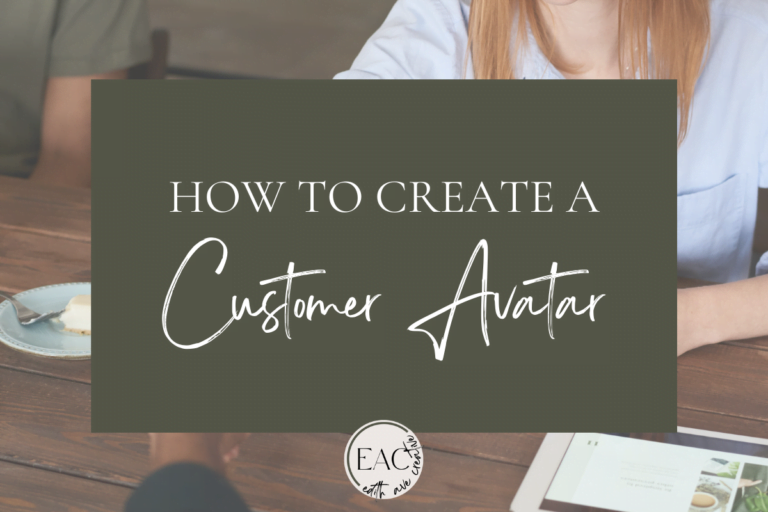Today, we’re diving into one of the fundamental aspects of your creative business journey: crafting a compelling elevator pitch or mission statement. Don’t worry if you’re not entirely sure what these terms mean – we’ll talk about them. While at first glance they might seem like the same thing, they actually serve distinct purposes and have different roles within your brand.
Elevator Pitch: Your 30-Second Superpower
Imagine you step into an elevator and in walks your dream client or investor. You have precisely 30 seconds to make an impression. What do you say? This is why it’s important to have an elevator pitch. Maybe you won’t ever actually use it on an elevator, but you need a practiced statement ready for when someone asks you what you do. This statement needs to be something more than “I’m a creative professional.”
Your elevator pitch should be concise, clear, and captivating. Start by introducing yourself and your business name. Then, explain what your business does and why it matters. Here’s a simple formula:
- Who you are: Your name and your role in the business.
- What you do: Describe your business in a sentence or two.
- Why it matters: Highlight the unique value your business brings to the table.
For example, “Hi, I’m Sarah, and I run ‘Artful Designs.’ We create one-of-a-kind sanctuary spaces within people’s homes, helping them have cozy spaces that inspire them and match their design vision.”
Keep it Simple and Engaging
The elevator pitch is a concise statement about your company that makes it easy for the person to whom you’re talking to remember the important details about your company. In this example, Sarah is giving a high-level view of what her clients can expect from her style. Maybe the person in the elevator isn’t going to be a client, but they have her elevator pitch in their mind when talking with someone else about a desire for a cozy living room. Her elevator pitch was specific enough that she could be recommended to people who would be her ideal client. This person wouldn’t send her clients interested in getting their corporate boardroom space designed— because that’s not her focus.
Show Your Passion
Don’t forget to inject some enthusiasm into your pitch. Let your passion shine through; it’s contagious! When you speak with conviction, it’s easier for others to connect with your vision. The elevator pitch isn’t the time to downplay what you do. Sarah wouldn’t want to say “At Artful Designs we create interior design plans for people’s homes.” While that may technically be the process, it doesn’t show passion for the work or demonstrate what her clients can expect.
An interior design client isn’t looking for a design presentation— they’re looking for the feeling of home. A photography client doesn’t just want a picture to frame— they want to capture a moment in time that allows them to remember emotions and memories. The elevator pitch is the time to focus on what benefit to the client the service is actually providing.
Practice, Practice, Practice
Crafting the perfect elevator pitch takes time and practice. Try different versions on friends or family and see which one gets the best reaction. You can start by practicing in the mirror if that helps your comfort level! Adjust and refine until you find the one that truly represents your business. The goal is to have a statement that you can easily, and naturally, give when people ask about your business. A practiced elevator pitch exudes confidence and professionalism — even if you’re still working on feeling confident!
Mission Statement: Your Business’s Focus
While an elevator pitch is like a preview of your business, a mission statement is the outline that guides your entire organization and tasks. It’s a declaration of your business’s core purpose, values, and long-term goals.
Start by asking yourself these questions:
- Why did you start this business?
- What change or impact do you want to create in the world?
- Which values are at the heart of your business?
- What are the long-term goals of your business?
Your mission statement should reflect your answers and encapsulate the essence of your business.
Keep it Short and Sweet
A mission statement isn’t an essay; it’s a succinct statement that anyone can understand. Aim for a sentence or two, max. Here’s an example:
“At Artful Designs, our mission is to turn houses into homes and spaces into experiences. We believe that your environment should reflect your unique personality and aspirations. With a commitment to sustainable practices and a deep respect for our clients’ dreams, we strive to create spaces that not only look stunning but also feel like an extension of your soul.”
Stay True to Your Mission
Your mission statement should guide your decision-making. Whenever you face a tough choice in your business journey, refer back to your mission statement. Does the decision align with your core purpose and values? If not, it might be time to rethink.
The Key Differences
- Purpose and Length:
- The elevator pitch is a brief, concise introduction (usually 30 seconds or less).
- The mission statement is a more detailed declaration of your business’s purpose, values, and long-term vision.
- Audience and Timing:
- The elevator pitch is primarily for quick, initial interactions with potential clients, investors, or partners.
- The mission statement is a foundational statement that helps shape your business’s identity and guide long-term decision-making.
- Focus:
- The elevator pitch focuses on what your business does and why it’s unique.
- The mission statement focuses on why your business exists, what it values, and where it’s headed in the long run.
Your elevator pitch and mission statement are like two sides of the same coin, working in harmony to define your business’s identity. The elevator pitch is your external engaging introduction, while the mission statement serves as your business’s internal guiding compass.
Creating an elevator pitch and mission statement is important for many reasons. It gives you as the business owner a direction for your business. It also effectively communicates to potential clients what you do and why it matters.
Remember, it’s okay to revise and refine these statements as your business evolves. In fact, it’s a sign of growth and adaptability. Your elevator pitch and mission statement should always reflect the heart and soul of your business. So, grab a notebook, brainstorm, and don’t be afraid to let your passion shine through. Crafting these statements is a pivotal step in making your creative business dreams a reality. Is it hard to start writing to an empty screen? Next, read this post about creating a customer avatar so you can feel like you’re writing to an actual person.








